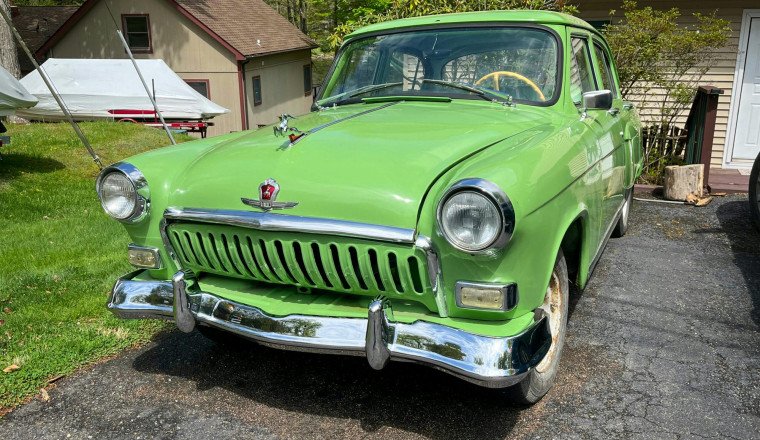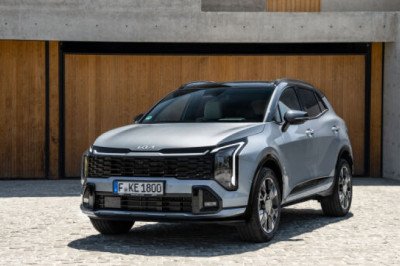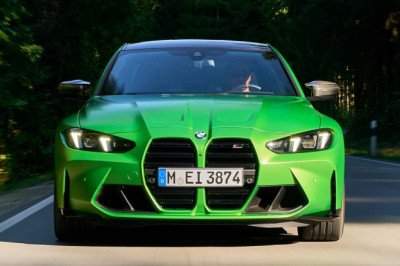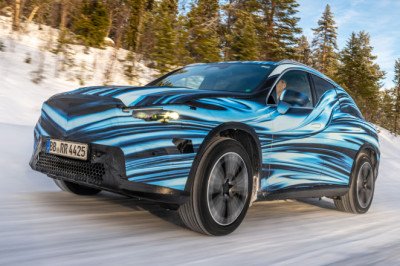
As people age and start thinking about buying a classic, they often gravitate toward the car they longed for in their youth. Perhaps it was the cool car their neighbor had, the one they could only dream of owning.
If you were a kid in the Union of Soviet Socialist Republics, that car was the GAZ M21 Volga. You might not think that the Soviet Union under Nikita Khrushchev could produce a truly desirable automobile, but the Volga is quite nice. So, when Vadim Aleksandrov, a Russian émigré living in Brooklyn in the early 21st century, yearned to live his own childhood automotive dreams, he asked his dad back in Russia to find him a nice Volga. And a few other things.
In 2019, shortly after his parents moved to the States, his vehicles arrived. There were 14 wheels in total, not including spares. Off a cargo ship docked in New Jersey rolled the following communist-era classics: a turquoise green 1960 Volga, a robin’s egg blue 1968 ZAZ Zaporozhets, and two bright green 1980s Ural sidecar motorcycles.
I recently came across Vadim’s Volga, listed for sale via an online marketplace, and I had to find out more. How did that car end up here? And how did a car from the USSR look so… nice?
Now parked in front of his home in northeastern Pennsylvania, the Volga still looks sharp, like something that could have been parked in a 1950s suburban American driveway. The paint is less than perfect upon inspection, but from a distance, only the car’s pocked and rusted steel wheels betray their age. The car’s re-chromed leaping deer hood ornament sparkles, as do the bumpers and the chrome trim.
Inside, the body-colored dashboard and seat trim show well, as does the car’s bone-colored steering wheel. It’s all flashier and more handsome than would have been required to fill the basic transportation needs of the proletariat, and, indeed, the GAZ Volga was not a car for the masses.
“This is like the top of the line that was in the market at the time,’ Vadim told me. “And nobody could actually get it, aside from people who knew people and had important positions.”
Vadim’s car is the second generation of the GAZ M21, a model line better known as the Volga. It takes its name from the river that passes through Nizhny Novgorod, the Russian city that was called Gorky at the time. In the 1930s, Ford Motor Company helped the Soviet government build the Gorky Automobile Factory or, in Russian, the Gorkovsky Avtomobilny Zavod. Walter Reuther, later the president of the United Auto Workers, was among those who trained workers in production processes. The factory’s first products were based heavily on the Ford Model A car and the Model AA truck.
The Volga, which shared none of its parts or designs with earlier American cars, first entered production in 1956. It immediately became a symbol of national pride. It demonstrated that the Soviet Union could produce a car as good as any in the profit-hungry West.
Still, this was an automobile engineered for the unique needs of its home country. It had relatively high ground clearance and sturdy suspension to handle poorly paved (or even unpaved) roads. At the same time, it sported luxury features like a heater, fully reclining front seats, and a cigarette lighter. Volgas were exported outside the Soviet Union and even entered international competitions, earning a class win at a 1959 Finnish road rally and finishing third at a rally in Greece.
Vadim’s second-generation car has a body-colored grille surrounded by chrome trim. (A fully chromed grille was also available.) The car’s 2.5-liter four-cylinder produced 70 horsepower and gave the car a top speed of 130 kilometers, or 81 miles, per hour, according to Lewis Siegelbaum’s book Cars for Comrades. Vadim’s car has a three-speed manual transmission. An automatic was available in earlier versions but proved too troublesome to maintain and, so, was dropped from the options list.
Once we’d spent some time looking over the Volga, I asked where the other car—the Zaporozhets—was parked. I was surprised when he told me it was in the basement.
How do you get a car into the basement?
We walked down a steep hill and through a pair of sliding glass doors, and there it was. This surprising parking solution made sense once I saw the car. It could have easily been pushed in through the sliding doors and rotated into its parking spot. It was tiny, like a classic Fiat 500.
In the world of Soviet automobiles, the Zaporozhets was the polar opposite of the Volga. If the Volga was a reward for the elite, the Zaporozhets was a simple tool for the working class—a simple machine to get someone from A to B. But this car had a personal tie to Vadim.
“My grandfather had the same car in the same color, same exact model, same interior color,” Vadim said.
In this car, space efficiency is everything. Its 26-horsepower, air-cooled V-4 engine rides in back. Cooling air enters through vents sticking out above each rear wheel. Under the hood, roughly half the “frunk” is taken up by the black-painted gas tank that sits in there like luggage behind the spare tire. The cabin is entered through a pair of rear-hinged doors, but there is, surprisingly, seating for four inside.
The unlovely Zaporozhets earned endearing nicknames like “horbatyi” (hunchback) and “myl’nitsa” (soap dish). Its real name simply means “man from Zaporizhzhia,” the city in Ukraine where it was built. Today, the region around Zaporizhzhia is fiercely contested territory in Russia’s war on Ukraine, but the ZAZ factory remains open, building buses, according to a website promoting business in Ukraine.
“This is even more rare than the Volga, really,” Vadim told me. “A lot of them would just get run down, because this is not one of those cars that you would preserve and pamper.”
While it’s not very reliable, Vadim told me, the Zaporozhets is, at least, easy to fix. Its small and simple engine can easily be quickly disconnected and dropped down from the engine bay.
“The car itself, a couple of people could just lift it up and move it because it’s so light,” he said.
The vehicle he uses the most, he said, is his 1988 Ural sidecar motorcycle.
“My father found it, and when he found it, it was actually brand-new. It was stored in a crate,” Vadim told me. “It had never been driven, so he actually assembled it.”
He has another, a 1987, that’s kept aside as a spare.
“It has a very unique sound of the engine,” he said. “It has a very unique feel and smell to it.”
When he got his bikes, he looked forward to taking his sons for rides in the sidecar. It turned out they weren’t as excited as he had hoped. For his boys, there wasn’t the attachment Vadim had from growing up in Kurgan in south central Russia, not far from the Ural mountain range.
“Once I got here, I guess it was part of the homesickness,” he said. “I had to have one.”
On all of Vadim’s communist-era classics, the tires are still worryingly original. The oldest are embossed with “Made in USSR” while some of the newer ones say, “Made in Russia.”
“They’ve survived 35,000 kilometers so far, but I think I’m going to have to replace them,” he said of the Soviet rubber on his motorcycle.
With the front and back yards of his small lakefront yard growing crowded with other vehicles like boats and jet skis, Vadim has continued trying to sell his blue-green GAZ. So far, he’s had no luck. He may be stuck with the car and its memories.
“Not everybody can appreciate a Volga,” he said.















Facebook Conversations